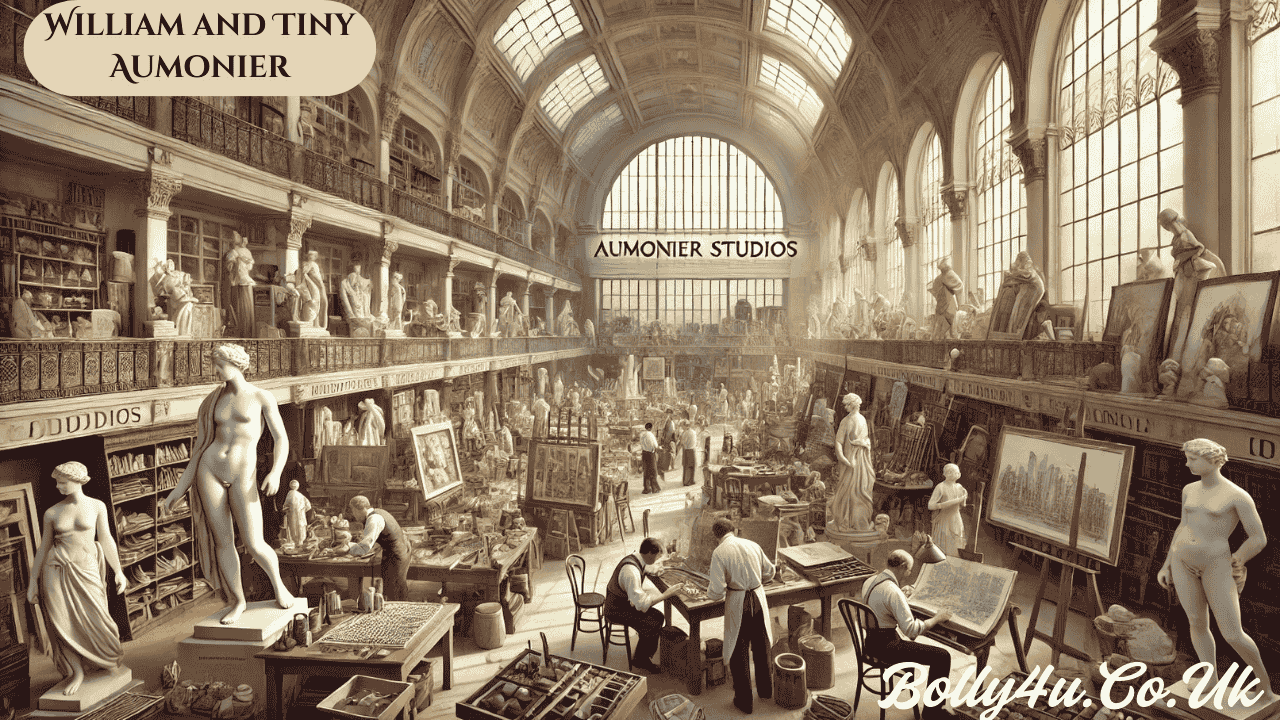William and Tiny Aumonier: A Remarkable Legacy in Art and Creativity

The Artistic Journey of William and Tiny Aumonier
The names William and Tiny Aumonier may not be immediately recognizable to the casual observer of art history, but their legacy is deeply embedded in the fabric of British creative and cultural evolution. From sculpture to landscape design, the Aumoniers left an indelible mark on various artistic disciplines, particularly during the late 19th and early 20th centuries.
The story of William and Tiny Aumonier is more than just a tale of artistic talent—it is a chronicle of family tradition, innovation, and contributions to British heritage. This article explores their life stories, artistic achievements, influence on British design, and the continued relevance of their work today.
William Aumonier: The Sculptor Behind the Stone
Early Life and Training
William Aumonier was born in 1839 in London into a family with French Huguenot ancestry. The Aumoniers were skilled artisans, and William’s interest in sculpture developed at a young age, inspired by the intricate craftsmanship and attention to detail that defined his family’s values.
His style reflected the neoclassical and Gothic revivalist movements popular at the time, with meticulous detail and symbolic storytelling present in his works.
Rise to Prominence
William Aumonier’s reputation rose through his contributions to iconic British structures. He was particularly known for his stone and marble architectural sculptures, many of which adorned major churches, government buildings, and estates across the United Kingdom. His work was not only celebrated for its aesthetic appeal but also for how it harmonized with the architectural elements it accompanied.
One of William’s greatest achievements was the establishment of The Aumonier Studios in London—a creative hub where architects and artists could collaborate. It quickly became a central institution in architectural design circles and employed many talented artisans of the era.
Legacy in Stone
William’s work endures in physical form across the UK. His sculptures remain a testament to his ability to blend form and function, spirituality and structure. From memorials and tomb sculptures to ornamental panels on historical buildings, his artistry shaped the visual culture of Victorian and Edwardian Britain.
Tiny Aumonier: A Unique Artistic Spirit

The Woman Behind the Name
Tiny Aumonier, often overshadowed by the legacy of William, deserves independent recognition as a creative force. While records on her life are more limited, her artistic output suggests a highly educated and imaginative individual, influenced both by her family’s artistic traditions and the modernist movement sweeping through Europe during her formative years.
Tiny’s nickname might suggest diminutiveness, but her contributions to the world of visual storytelling were anything but small. She developed a distinctive style characterized by experimental form, emotional depth, and narrative strength.
Career and Artistic Contributions
Tiny Aumonier was active primarily in the first half of the 20th century and became known for her illustrations, sculptures, and possibly early works in theatrical or costume design. Her works often explored themes of nature, femininity, and identity. She may have also collaborated with contemporary designers and exhibited in local art shows and galleries across London.
Some art historians argue that Tiny Aumonier was part of a movement of women artists breaking away from traditional roles and entering male-dominated artistic spaces. She was reportedly associated with circles that supported women’s artistic development and progressive education.
A Silent Influence
Though not as widely celebrated in her time, Tiny’s influence is evident in the subtle yet meaningful shifts in female artistic representation during the early 1900s. She provided a blueprint for how personal vision and heritage could blend, offering a gentle rebellion against the norm. She served as both a preserver and an innovator of the Aumonier legacy.
The Aumonier Studios: Where Tradition and Innovation Meet
A Legacy of Craftsmanship
The Aumonier Studios, founded by William, became a symbol of artistic excellence and mentorship. It wasn’t just a workplace—it was a breeding ground for future architects, sculptors, and designers. Even after William’s passing, the studio continued to uphold the traditions of excellence he had set, likely with contributions from later family members, including Tiny.
The studio participated in significant public projects, from war memorials to decorative installations in national museums. Its approach combined the classical with the modern, a style that influenced broader trends in British design.
Influence on British Decorative Arts
The techniques pioneered by William and sustained through family involvement, possibly including Tiny’s efforts, fed into the British Arts and Crafts movement—a pivotal movement that emphasized handcrafting and artistic integrity. This movement would later inspire figures such as William Morris and Charles Rennie Mackintosh.
The Aumoniers did not just create art; they influenced policy, practice, and pedagogy in British artistic circles. They championed the value of integrating the artistic process with architectural purpose, a philosophy still respected today.
Artistic Philosophy: Beauty with Purpose

Symbolism and Detail
A consistent trait in both William and Tiny Aumonier’s work is the deep symbolic undercurrent. William’s sculptures often depicted themes from literature, history, and theology, while Tiny’s illustrations are thought to reflect introspection, nature, and emotion.
Their art didn’t serve merely decorative purposes—it was deeply communicative. This aligns them with the broader movement in Victorian and Edwardian England to bring meaning and morality into public and private spaces through art.
Bridging Generations of Expression
The intergenerational story of William and Tiny Aumonier reflects the evolution of art across a critical period in British history. From William’s structured, ornate craftsmanship rooted in the 19th century to Tiny’s emotionally resonant and modernist influences in the early 20th century, the Aumoniers embodied a bridge between artistic epochs.
William and Tiny Aumonier in Retrospect

Recognition and Rediscovery
Efforts are underway to catalog and preserve William’s stone works across the UK, and interest in women artists like Tiny is growing as part of broader efforts to recognize underrepresented voices in art history.
Their Enduring Impact
The impact of William and Tiny Aumonier is not limited to physical sculptures or designs. Their greatest legacy may lie in how they carried forward the belief in art as a vital, communal, and human practice.
Conclusion: Remembering William and Tiny Aumonier
The story of William and Tiny Aumonier is a testament to the power of creativity passed down through generations. William laid the foundation with his skill and dedication to architectural sculpture, shaping buildings and institutions that endure today. Tiny carried that spirit forward, adding a fresh, personal voice to the Aumonier heritage during a time when women were fighting for visibility in the art world.
Together, they represent the blend of discipline and imagination, of legacy and innovation. Their lives remind us that behind every stone carving or inked line lies a world of intention, history, and passion.



